Retail Training: Motivating Frontline Associates to Stay, Learn, Contribute, and Grow

Properly trained sales staff and qualified merchandisers are the face of your brand. Their work can keep your customers engaged and loyal and keep your business thriving. The glamour of customer-facing retail comes from your careful planning behind the scenes. Market research, logistics, and financing are critical parts of a retail business. But customers interact with the frontline staff.
This is why service skills training is so important for organizations in retail. In this article, you’ll learn about the why and the how behind frontline associate skills training and get an expert perspective from an experienced CEO.
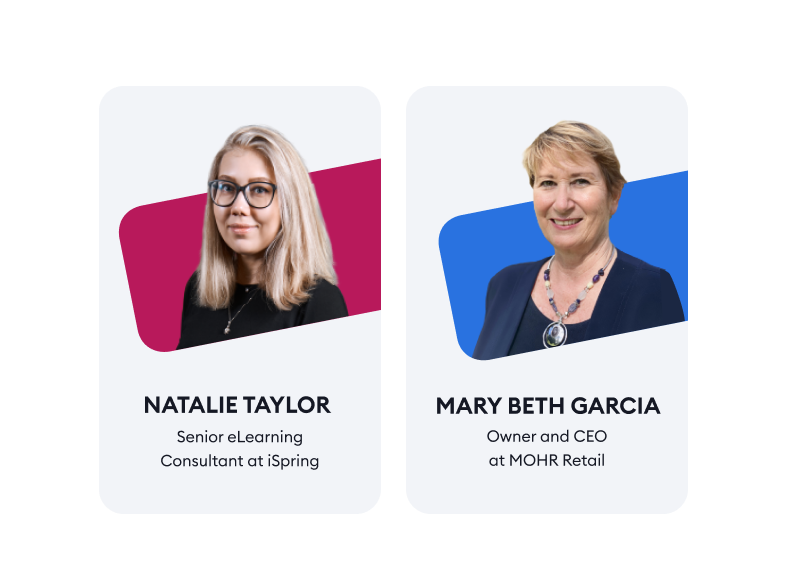
Natalie Taylor is the Senior eLearning Consultant at iSpring. She helps businesses reboot employee training with online technologies to increase revenue and achieve organizational goals. Natalie has helped 270 companies in North America tailor eLearning to their specific needs.
Mary Beth Garcia is the Owner and CEO at MOHR Retail. Mary Beth has worked with a variety of retail and hospitality clients as a strategic partner, delivering leadership and retail coaching. Prior to her consulting work, she spent more than 20 years in retail management and operations, holding numerous leadership positions in sales, store, district, and regional management and corporate training and operations.
This interview is brought to you by iSpring L&D Consulting with minor modifications. iSpring L&D Consulting specializes in the selection of optimal solutions for corporate training, depending on the business needs and industry specifics. Feel free to access the website and request help free of charge by answering a quick survey about your training strategy.
If you’d like to delve deeper into retail employee training, check out the webinar recording featuring our speakers.
The Role of Training in Meeting Customer Needs
Natalie: So today, let’s focus on frontline associates and their skills training. It’s not enough to onboard your new hires efficiently. It takes ensuring proper employee development throughout their career by means of quality on-the-job, compliance and product training, as well as upskilling and reskilling.
So, Mary Beth, what is service skills training in the retail industry, and why is it important?
Mary Beth: It depends, it really depends on the customer, the retailer, and what the service expectation is for them. It can run from fast, friendly, and efficient for your big box retailers in grocery, to very high-touch or personalized service and clienteling for more high fashion and high-end retailers. So, it’s important to know what your customers’ needs are, and really what their expectations are. Because that’s going to define what your service level is, and then the training and service standards that you must put into place to be able to meet those standards.
So, having good customer service standards, and meeting customers where they are with what they want, is really the first step in building loyalty.
Natalie: That makes sense. And what is the easiest way to define the level of service? So, let’s say I decided to run a retail business. And what is the first step for me? What is the easiest way to define the level of service?
Mary Beth: Well, as I said, you really need to know what your customers expect. So that means that you must be able to determine their needs and find out exactly what they looking for in their shopping experience.
I think time is important for customers today. So, efficiency even in high-end retail and clienteling is going to be important. But the most important thing is you’ve got to make it a comfortable environment.
And that starts with the environment you create for your associates and that frontline worker. When they feel good and comfortable, they’re going to create a welcoming environment for your customers.

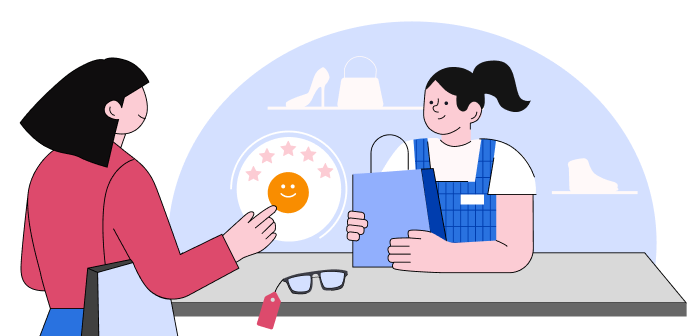
There isn’t a customer who wants to be frowned at. Some want to pick items out themselves; they just want direction. Others want to be guided; they want that high-touch experience. So, it is about determining what your client, your customer’s needs are, and making sure that you meet them and don’t waste their time.
Benefits of Proper Retail Training
Natalie: Okay. Well, there is no denying that the right training strategy can help your employees develop stronger sales, improve communication skills, and greatly increase productivity. And all of this will result in more sales.
But what other benefits can retail businesses reap from a well-conceived training strategy?
Mary Beth: Well, I think that everyone’s heard ad nauseam about the Big Resignation and how it has hit the service, restaurant, and retail industries the most.
So, the first thing is that training can benefit your business by engaging your associates. They’ll want to stay, thus reducing turnover. I think that’s probably the biggest key because customers like to see the same folks. It’s nice, especially if they know them and greet them by name. I think that’s important.
There’s no training as an event. It’s a process. It’s ongoing, and it’s always evolving just in time.

There is a myth that more experienced, tenured sales associates don’t need any more training. But retail has changed so much; it’s one of the fastest changing environments. So, everything is going to be new. And so, there’s always going to be opportunities to really light that spark, even for associates who have been there for a long time.
It’s critical for new associates to get the training to make them more confident. Because when they’re more competent, they’re more confident. Investing in training to get them to that level will be important.
I remember my early days in retail. I went through a one-day orientation, and I was a brand-new third keyholder, and I got the keys. “That’s all, ‘good luck’ then.” And I was petrified – might I set the alarm off? What could have happened? I was entrusted with the money, the deposits, and so forth. And I think that I was not confident. I can tell you that confidence is what’s most important. And so, just like the associates feeling confident and comfortable, this makes customers far more confident.
When customers see the same associates, it’s comfortable for them. The customers trust us when they see the same associates, and they’re getting that same level of service. We owe that to our customers to provide that level of service. And it really does start with providing that environment for the frontline associates.
Natalie: That was my guess as well. So, in my opinion, it basically can be related to any industry. If you’re investing in your employees, it helps reduce turnover, improve customer service and satisfaction, and, of course, improve company image. People are important for every business. So, people are the key.
Mary Beth: Absolutely.
What Makes a Great Customer Experience
Natalie: Yeah. Okay. So, if we want our customers to return again and again and to recommend us to their family and friends, we must provide a great customer experience.
But what makes up a great customer experience?
Mary Beth: Well, again, it depends. Everybody’s expectations are a little bit different. And so, a knowledgeable salesperson asks great questions to determine the customer’s needs and helps them based on how they respond.
So, listening is extremely important. There might be items of the day and spiffs in retail that are on promotion, that you can get a couple of dollars for selling. And you just need to be able to suggest that to the customer. But you need to react to the customers about what they expressed as a need.
The great experience is when a customer feels they’ve been heard. And so, I think that you not only ask questions to determine their needs. You listen to what they are requesting, and then you respond to that.
As I mentioned before, when it comes to shopping, time is important for everybody. I don’t think anyone says they have all the time in the world. Furthermore, I haven’t heard that in 20 years. So, I think being respectful of people’s time, really getting to what their needs are, and being able to service them quickly is important for a customer’s experience.
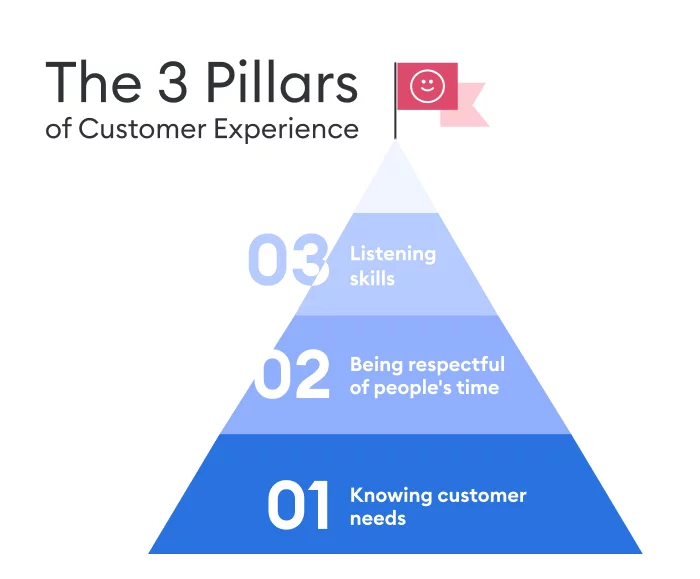
What I recommend is that the sales and service training must really determine what the customer’s needs are and be flexible regarding those needs and what the customer tells you. Then you need to be able to teach your associates how to respond accordingly. So, that has a lot to do with making that customer experience special.
Customer Experiences in Physical and Online Stores
Natalie: Is there any actual difference between the customer experience of a physical retailer and that of an online store? If yes, what is the difference?
Mary Beth: Yeah, absolutely. I think the in-store experience provides the salesperson with more cues. They’re able to read body language, facial expressions, and have both verbal and nonverbal cues. They can interact and engage more freely by reading these cues. There is great, amazing software technology now that can really create that experience, but it’s a lonely experience.
I always believe feedback is a gift, and it’s a gift having someone that’s knowledgeable be able to provide and learn a little bit more about my needs as a customer.
So far, the chat box and similar technological things like that haven’t worked. But let’s face it: the convenience of shopping online and getting it delivered to your home and office 24/7 is amazing. And I think that’s extremely important, and that’s something that’s just grown, especially in the last 10 years, but mostly since the pandemic.
I want to give a big shout-out to live shopping. And what I’m seeing, what I’m reading in all the retail reports, and what we’re hearing from our clients, is that it’s coming back. We’re starting to get busier, and I’m in the stores more and seeing a lot more customers.
So, I think you can’t duplicate the experience of holding that pot in your hand to see how heavy it is. That’s the hardest part of being online, as you can’t get that, you can’t get that total shopping experience.
I still think the human touch is extremely important, and it’s a matter of meeting the customers where they are. Everyone is educated now, and most customers that walk into your stores have already been to your website and your social media sites.
It’s important to have your associates as knowledgeable as your customers.

We have a more knowledgeable client base, and if they come into a store, we need to celebrate this because they’ve gone through a lot of effort parking that car to get there. We need to really honor that they’ve given us their time.
Natalie: And again, human touch.
Mary Beth: Plus, I don’t think there are any successful, tremendously successful retailers that are not omnichannel now.
The Skills of a Good Sales Associate
Natalie: Right. Okay. Then, the next question. You can help develop the sales and communication skills of your frontline employees. But do your employees need a basic set of personal skills to succeed in their career in retail? Are traits such as sociability, responsibility, and honesty critical to success?
Mary Beth: Well, that’s a great question. I just read an article last week in Inc. magazine about top retail and service organizations that should hire for personality and fit in your culture over skill. And I think that’s a big pendulum swing. You can train skills, but it’s hard to train someone to really love serving people, be curious, and be excited about the retail business. I do believe there’s truth in that.
We use the DISC assessment framework for everyone in our training. It’s a personality style indicator. It’s quick, but we never ever recommend that this be used for hiring or for promotions. Because it’s just your DNA. It’s who you are. And so, with that in mind, I would warn other retailers against trying to hire the big, exciting people that are always enthusiastic.
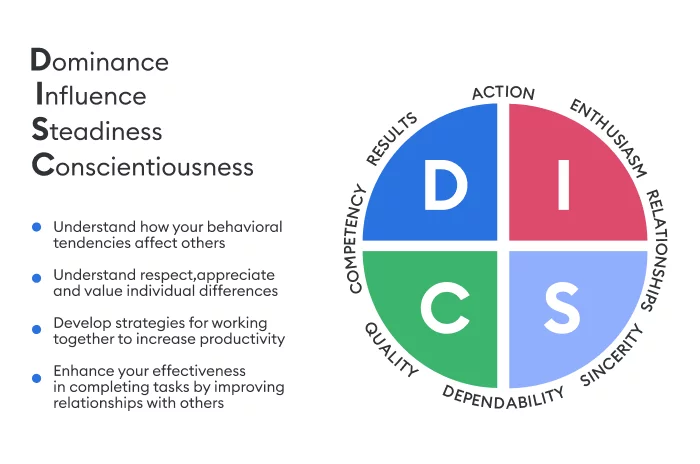
Source: MOHR Retail
I don’t believe that only outgoing, gregarious, aggressive people can sell. I have worked with some top salespeople that are really quiet and shy. They’re excellent listeners to the customer, and then they listen and respond to that customer and wind up being in the top sales because they’re able to understand and validate what the customers’ needs are, and then service them.
Good salespeople need to be authentic with a touch of chameleon, i.e., being able to flex outside their own comfort zone and natural style to engage with the customer. That takes a tremendous number of interpersonal skills. In the retail industry, you do have to be able to communicate effectively.
Now, soft skills are effective communication skills, and they really do drive results. We believe in asking questions, giving acknowledgment, making eye contact, and having that personal touch, but asking questions to determine needs. But more important than listening and responding is listening to what they say.
Now, soft skills are effective communication skills and they really do drive results. We really believe in asking questions, giving acknowledgment, making eye contact, and having that personal touch, but asking questions to determine needs. But more important than listening and responding is listening to what they say.
A good sales and service person helps make the right, smart decision for the customer. Customers are going to give their money, their credit card, and wave their Apple Wallet across the counter when they feel comfortable and they feel confident in the decision.
Gamification in Retail Training
Natalie: Well, let’s talk about motivation in training. While different types of learners can motivate themselves to study, some just sabotage training, truly believing they already know it all. So, gamification and achievements can do magic here, and employees thrive in a gently competitive atmosphere, and it motivates them to learn.
So, Mary Beth, do you think this strategy would be helpful for training frontline employees?
Mary Beth: Yes, yes, and yes! Competition and retail go hand in hand. You need to make it fun and competitive. Retailers are always competing. We get a report card every day, TY/LY comparisons, stretch goals, UPT (units per transaction), average sale, all those things.
So, in the retail business, we have a dashboard that we used before dashboards were invented in technology and that we’ve always subscribed to. Having that competition report card is very important. Competition in learning makes employees want to learn more. There’s nothing that a training company would want more of, right?
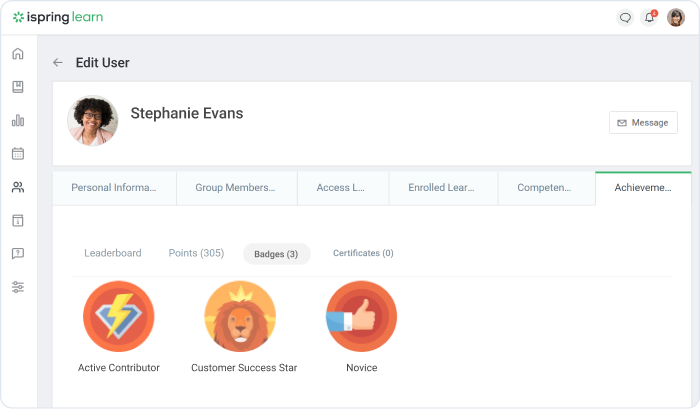
And I think that having an online mobile gauge on the floor that can be accessed through a tablet is the real deal for frontline employees. It meets them where they are. And I think using brain science and gamification is extremely important because it resembles stretching before running. You’re just getting your mind ready. It just jump-starts so that they can retain the information. So, I believe in it. We use it daily for reinforcement.
We don’t believe in training as an event. When people register, we will start with an online app that they can download. We have a few questions about the course to get their baseline knowledge. They take the DISC profile, then they go through the series of virtual or live classroom trainings, and they’re answering questions the whole time. The questions will get harder and harder. Along with gamification, with leaderboards, it helps them compete.
Sales associates have training on their app from 90 to 120 days after going through a training class. So, they’re still competing and they’re still learning.
iSpring does things like that to help enhance the training, too. So, it really is important for growing and retaining knowledge, and enables continuous learning.
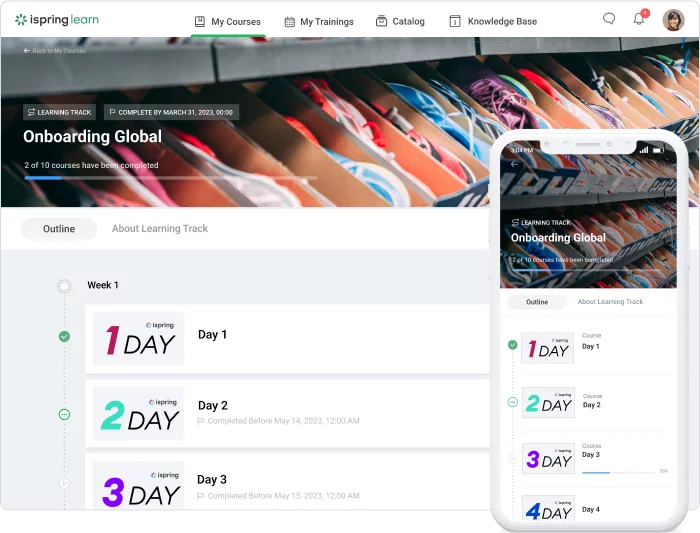
The one thing I want to say is that it’s not a one-size-fits-all approach. It can’t all be online, because it must have the leadership, the mentoring, and the coaching parts.
Natalie: I came across one research project recently and it said that gamification makes employees more productive, more engaged, and happier at work. Do you have any similar examples from your experience?
Mary Beth: Yeah. I think that Bubble Shooter is our number one game [laughing]. I can tell you that. But we have over 40 games and that seems to be the one that everybody likes to compete with.
When I talk to clients about gamification, I get the ‘deer in the headlights’ reaction sometimes, and they’re thinking that their associates are going to be playing Candy Crush for hours, and they’re going to be ignoring customers. Gamification is just when you can link training and current brain science.

Generations Y and Z, they’ve all been born with a phone or tablet in their hand. So, technology is just part of life. And so, I think that for this generation we are, it’s just natural that you combine it with learning and performance and make it fun because we’ve got a world of gamers out there. And if we can attract them, we will succeed.
And I mean, even things like Wordle. Everyone is involved in gaming of some sort at any age group. It’s such acceptable behavior now. So, linking that to training is natural, and it will only help you, your people, be more engaged and learn more.
The Challenges of Implementing Frontline Associate Training
Natalie: Well, there is no doubt that retail frontline employee training is very important for businesses. But carrying out effective training might not be so easy, right?
And what are the challenges that learning and development and human resources specialists in the retail industry might face in terms of frontline employee training? Like how do we address issues such as choosing a location for training, distributing products, updating quickly, or reducing training costs?
Mary Beth: I think this goes into what we talked about, that there are a lot of shortages right now, staff shortages. It’s always been hard to get salespeople off the floor, to get the payroll hours to be able to get them off the floor, to be able to learn. And so, I think that especially with the staff shortages now, it’s even harder and harder. But pulling people away in a group meeting somewhere – I haven’t seen it in years, and I don’t think we’re going to see that again.
Three or four years ago, clients were like “No, we can’t have them using their phone.” And then we realized that, no, they’re not going to be charging it for hours [1] [2] because they are loving this. They love learning, and they love doing that, and it’s easier to make it accessible to them.
So, the challenge is finding the time. You need to do a lot online. You have to make training mobile engaged, make it easy to do.
I would prioritize the accessibility to meet the front-line associates where they are, with the training in a tablet or mobile phone, making it quick and easy, and following up with store meetings, if you can have that.
Also, if you can get those one-on-ones with a manager, it will be a great aid as well. Because people who just do online training or go to a training class, the chance of them using the skills are unfortunately from 16 to 24 percent. And that’s not an acceptable performance for the return on investment. What happens though is when you can have the leader reinforce, it really gives them the permission to utilize the skills.
It doesn’t mean that the leader will be checking on employees and asking “Did you go to the training? Did you complete the training? Is everything okay?” That’s not going to work. What we really need to talk about is “What did you learn? What training was most impactful for you? What have you practiced?”
When there is a top-down approach and the managers are involved, it goes up to 85 percent of the people who will use the training.
You need to train the leaders as well because you can get them off the floor easier and you can get them to be better coaches and mentors so they can continue that one-on-one mentoring with the folks. Being able to coach is a part of training and development that we cannot underestimate.
Natalie: Yeah. I agree with you 100%. Mentoring and coaching are helpful and useful when you need to develop specific skills.
The Necessity of a Blended Approach in Retail Training
Natalie: Now, let’s change direction a little bit and talk about training formats. Face-to-face training has many advantages, no doubt. But it’s becoming less and less sustainable as business becomes more digital.
Online training allows learners to take training across the globe at a time that works for them to learn at their own pace. And with online training, you can benefit from less admin work. But do you agree that in-person training is still necessary?
Mary Beth: Yeah, I agree. I believe in a blended approach. I don’t believe there’s one size that fits all. As I mentioned, we do a lot of research with the DISC assessment and the personality styles, and that everybody’s needs are different. That’s something you have to be aware of when you’re an L&D director or in HR, or a store leader, or a district manager. You can’t use a one-size-fits-all approach for everyone, you need to meet the learners as they are.
And so, a blended approach is going to be important because you’re going to be able to touch everybody with that. We mix it up a lot in our environment for learning because we know that there have to be several touchpoints. You also need to use other ways for them to get together and practice what they learn. That’s the missing part that will create behavioral change. So, face-to-face training is not going away because the human touch is important.
7 Tips for Revamping Frontline Employees Training
Natalie: Mary Beth, to conclude, can you share some tips and tricks or maybe exact steps for those who are looking to revamp their frontline employee training strategy?
Mary Beth: What I’d love to share is more about sustainability. So, I’ll talk to you about a training approach as a process that is always evolving and growing, not a packaged canned approach. You really need to keep it going, keep it involved, and have a strategy for each level of the organization.
1. Keep senior leaders involved
The effectiveness of training is, in many ways, dependent on the leader’s involvement, so it all starts from the head. Involve leaders, get their buy-in, and have them interested in the continuous development of their team. There should be an understanding on their end that training is essential, and people are not just lazy or having fun.
2. Provide on-the-job tools for reinforcement
Leverage mobile learning and microlearning to facilitate ongoing training and effective post training. Introduce gamification and elements of friendly competition with peers to get more training done.
3. Hold people accountable
Job descriptions, performance reviews, and evaluation processes – you need to align performance systems with the interpersonal skills and behaviors you want to see.
4. Implement coaching and leadership training
In retail, coaching should be right there on the spot. Develop stronger coaches within the organization, raising the bar each year for a cultural touchstone. Learn about the skills of a great trainer in this article.
5. Let them teach to learn
Teaching key interpersonal and facilitation skills to others is a terrific way to reinforce the skills for your own benefit. Try to leverage ‘train the trainer’ sessions where experts can learn from each other.
6. Measure for continuous improvement
Establish baselines of performance and identify metrics, so you can evaluate success and pinpoint gaps for coaching opportunities. In retail, if it gets measured, it gets done. If you want to know how to link training with your ROI, feel free to proceed with this webinar.
7. Celebrate successes
You need to encourage this further and share stories about KPIs achieved in newsletters, meetings, bulletin boards, break rooms, emails, etc. Showcasing human success stories ultimately results in an increase in human capital and revenue value.
My final advice is to not feel that anyone is done. There is no such thing as trained employees. It’s impossible to say anyone is trained. They’re training for that moment.
Natalie: Awesome, Mary Beth, thank you so much for this great session. The topic is great. I hope we will have another session in the nearest future.
Mary Beth: I’ll come back anytime you invite me. So, thank you so much.
To Sum Up

Natalie Taylor, Senior eLearning Consultant
So now, we know that frontline associate training is important, and we have identified the following training challenges and opportunities to overcome them. Let’s sum up the essentials of retail employee training.
Training facilitation. Training in retail is very high speed, and choosing a location as well as scheduling sessions is especially tricky. We need to provide just-in-time, ongoing opportunities to access training content or practice skills without getting people off the floor or closing shops for the day.
Training accessibility. We need to roll out training quickly. In times of new product launches, businesses often need to get their retail staff up to speed on the product on short notice. This suggests the use of mobile courses that can be created quickly, without any IT skills, and accessed on portable devices at the point of need.
Training format. It should be quick and engaging, and blend in the elements of coaching. Before you launch your training, understand the three main types of training methods: asynchronous, synchronous, and blended learning. They all have pros and cons, so get to know them before you choose a training method for your program.
Training costs. It can be extremely pricey to gather sales reps from different stores and regions in one place for training or organize training sessions at the last minute.
Here at iSpring, we see every day how online training can address all these challenges. Online retail training is a flexible option that allows trainees to participate anywhere on the planet at a time that works for them. They can review the training when they need it. It’s a great aid to onboarding, product knowledge, and compliance training because it makes critical knowledge equally available for every hire.
Courses made with the iSpring Suite authoring tool keep your learners engaged and enable you to assess their knowledge effectively. Training programs launched in the iSpring LMS help you spread best business practices across any number of chain stores and streamline training without extra admin work and costs. Thus, iSpring’s integrated solution helps you retain employees, bridge skills and knowledge gaps, make your team confident, and, consequently, leads to better sales performance.
This is just a snapshot of business problems that you can solve with the proper tools and approach. If you’re not sure yet about your training needs or how to fix training-related processes to drive business results, request free iSpring L&D Consulting services today.



